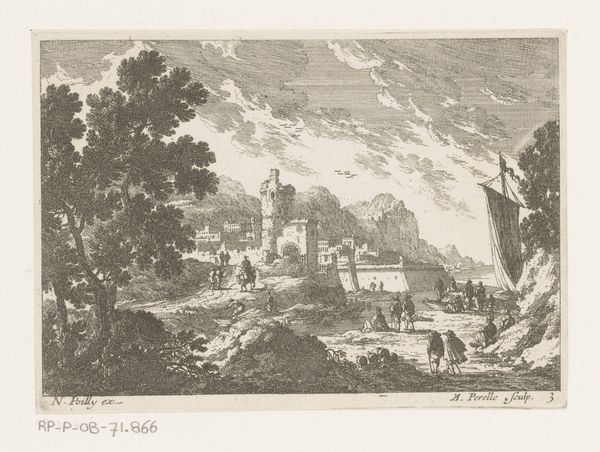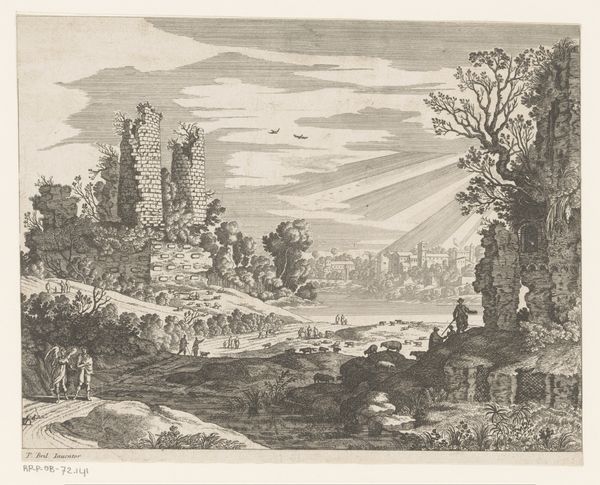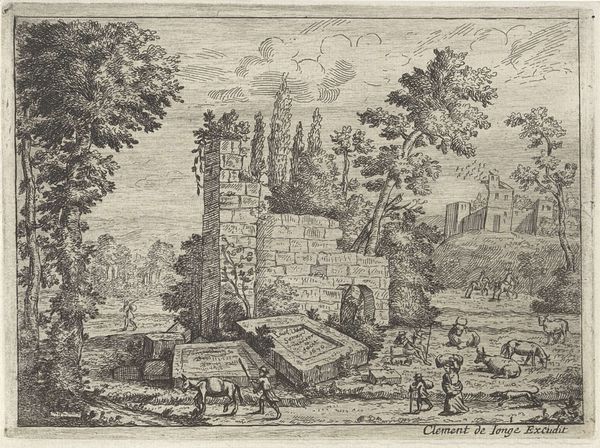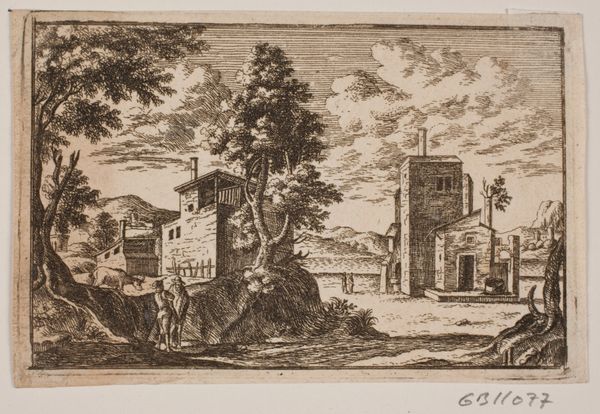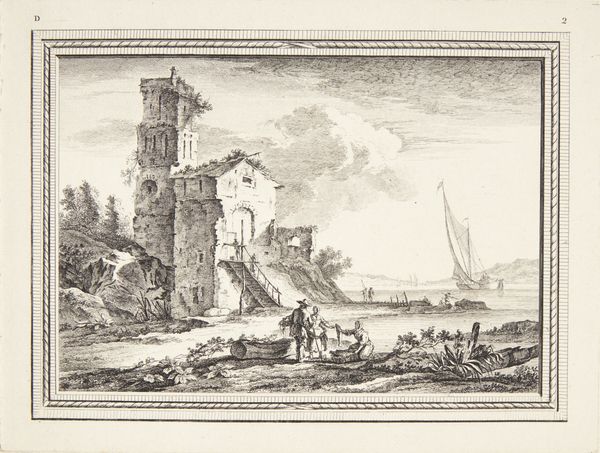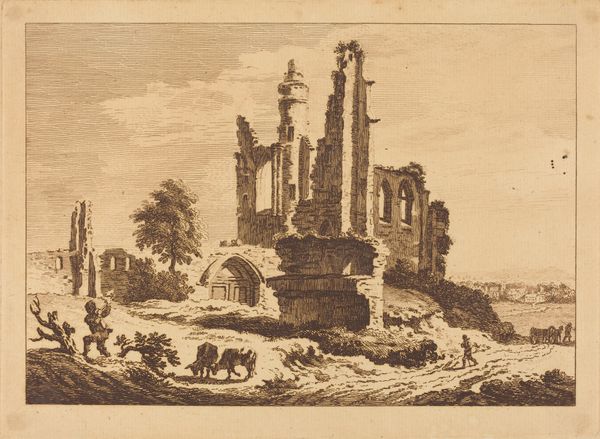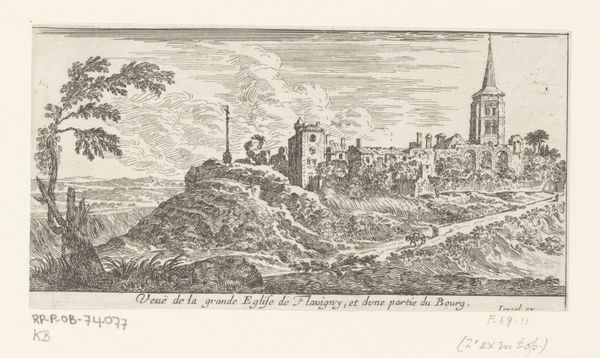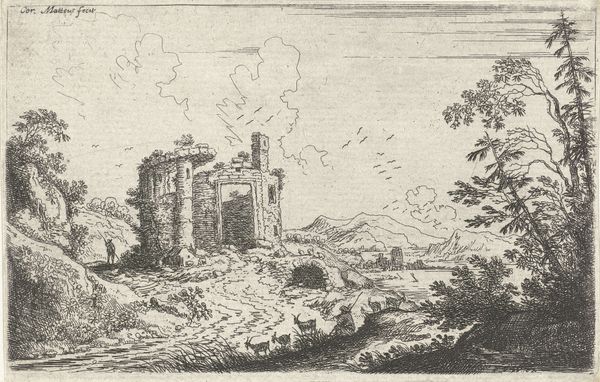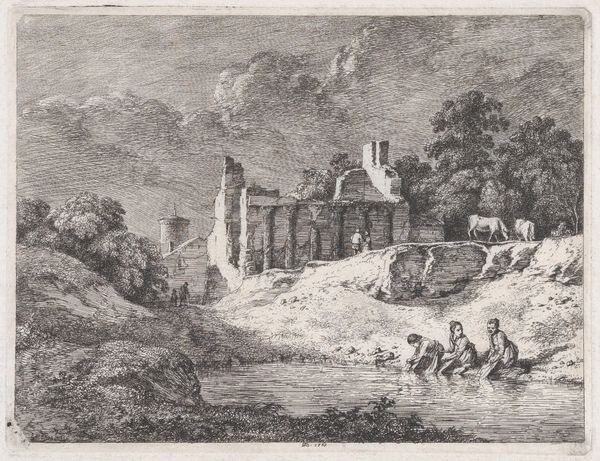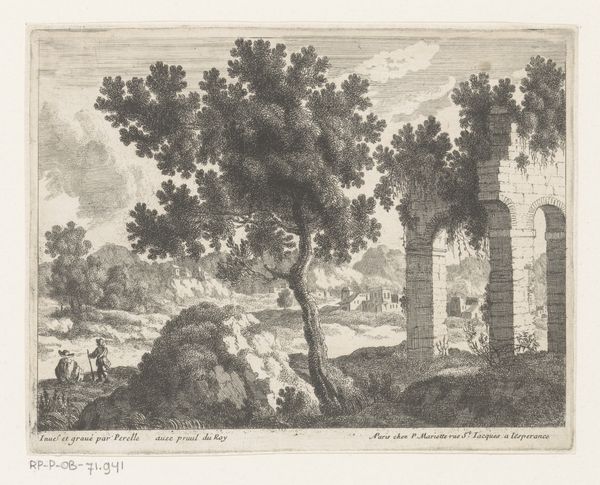
print, engraving
#
baroque
# print
#
pen sketch
#
pencil sketch
#
old engraving style
#
landscape
#
cityscape
#
history-painting
#
engraving
Dimensions: height 109 mm, width 167 mm
Copyright: Rijks Museum: Open Domain
Editor: This is Nicolas Perelle's "Landschap met ruïnes en schip," a baroque engraving from sometime between 1613 and 1695. The contrast between the classical ruins and the beached ship immediately catches my eye. How do you interpret the symbolism in this scene? Curator: That's a great starting point. What strikes me is the juxtaposition of decay and potential. Ruins often speak to a lost golden age, a powerful civilization brought to its knees. Does this resonate with other imagery of fallen empires for you? Editor: Absolutely! I'm seeing echoes of Rome. The broken columns against the grounded ship…it feels like a commentary on the transience of power, the shift from land to sea. Curator: Precisely. Ships, for centuries, have symbolized journeys, trade, and expansion. The grounding of this vessel, however, hints at stagnation or even disaster. But consider how this era embraced allegory – what hidden meanings could Perelle embed through these specific ruins? Think about contemporary social and political instability too... Editor: The idea of instability makes a lot of sense considering it’s placed alongside a shipwreck! It does almost seem didactic—reminding the viewer about being grounded amidst societal storms, staying on solid foundations. The ruins could represent something positive and enduring rather than pure decay? Curator: It's a dance between both concepts – what resonates, emotionally, depends so much on the viewer and historical context. What this piece says about aspiration, ambition and societal vulnerability still holds such resonance! Editor: Seeing those connections gives the work so much more depth. It makes you wonder what “ruins” our modern world will leave behind, and what our stranded “ships” might look like. Thanks for sharing this symbolic context with me.
Comments
No comments
Be the first to comment and join the conversation on the ultimate creative platform.
